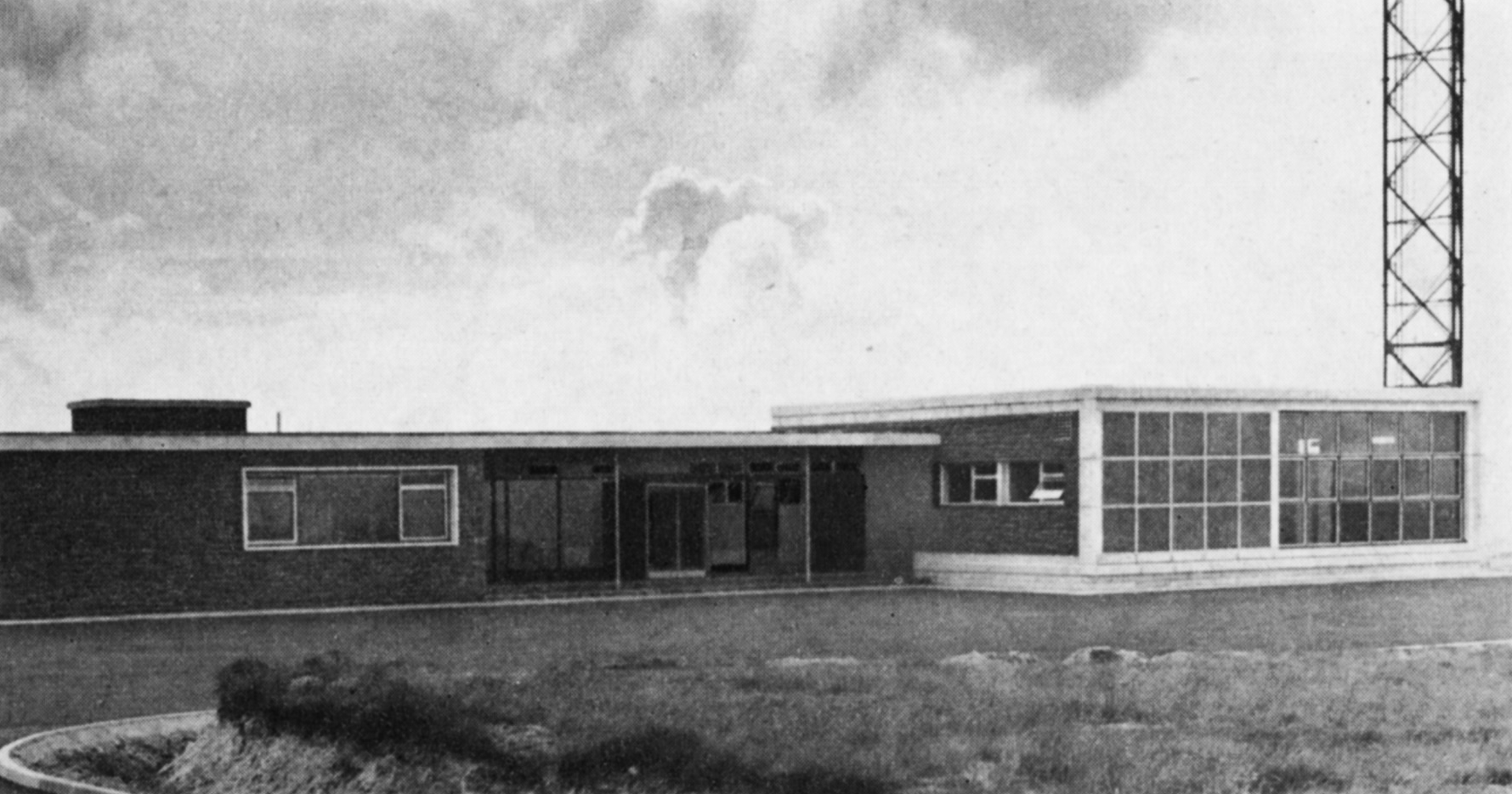- CALDBECK
- Population within measured contours: Primary 0.28 mn, Secondary 0.043 mn, Fringe 0.041 mn. Total 0.364 mn.
- Channel: Band III Channel 11 (horizontally polarised)
- Vision Carrier Frequency: Actual 204.75 Mc/s
- Sound Carrier Frequency: Actual 201.25 Mc/s
- Effective Radiated Power: Vision 100 kw maximum. Sound 25 kw maximum.
- Power of Transmitters: Vision (peak white) 4 kW. Sound (carrier) 1 kW
- Heights above sea level: Site 940 ft. Mean aerial 1,900 ft.
- Location: 3° 5′ 21″ W, 54° 46′ 24″ N.
- SELKIRK
- Population within measured contours: Primary 0.071 mn, Secondary 0.026 mn, Fringe 0.019 mn. Total 0.116 mn.
- Channel: Band III Channel 13 (vertically polarised)
- Vision Carrier Frequency: Nominal 214.75 Mc/s. Actual 214.723 Mc/s
- Sound Carrier Frequency: Nominal 211.25 Mc/s. Actual 211.223 Mc/s
- Effective Radiated Power: Vision 25 kw maximum. Sound 6.25 kw maximum.
- Power of Transmitters: Vision (peak white) 2 x 0.5 kW. Sound (carrier) 2 x 0.125 kW
- Heights above sea level: Site 944 ft. Mean aerial 1,644 ft.
- Location: 2° 47′ 30″ W, 55° 33′ 22″ N.
Calbeck (Channel 11) and Selkirk (Channel 13)
Company: Border Television
The Border country has two well-populated areas separated by the high sparsely-populated Cheviot Hills. That in the west extends north and south of the Solway Firth and includes the towns of Carlisle, Penrith and Dumfries. The other, in the east, embraces the Valley of the Tweed, and includes Selkirk and the coastal town of Berwick-on-Tweed.
Planning studies indicated that the best way of serving the pupulated areas was to build two separate stations, one near Carlisle and one near Selkirk. The site chosen for the first station was at Caldbeck, 940 ft. above sea level and some 10 miles west of Carlisle, in the foothills of the Cumbrian Mountains. Caldbeck lies somewhat to the south of the area to be served and a directional transmitting aerial supported on a 1,000 ft. mast was provided to radiate the maximum power of 100 kW to the northeast and the south-west, about 7o kW to the north-west across the Solway Firth, but only 20 kW to the south-east. In this direction the useful signal would naturally be blocked by mountainous country, which would not, however, prevent an interfering signal from penetrating into the service area of Mendlesham (which uses the same channel) some 200 miles distant, unless power in that direction were appropriately restricted.

The second station was built on Lindean Moor, 944 feet above sea level and close to Selkirk. It has a 750 ft. mast and an aerial which radiates its effective power of 25 kW mainly eastwards towards the coast. This provides a good secondary service in Berwick-on-Tweed, whilst the numerous small towns of the Tweed Valley all receive a primary service.
The Selkirk station is a satellite of Caldbeck. It obtains its programmes by direct radio pick-up from Caldbeck and rebroadcasts them on a different channel. It is the first of a number of unattended remotely-controlled satellite stations of medium to low power to be constructed by the Authority.
Caldbeck began programme service on 1st September 1961 and Selkirk on 1st December in the same year, and both well fulfil the purpose for which they were designed.

